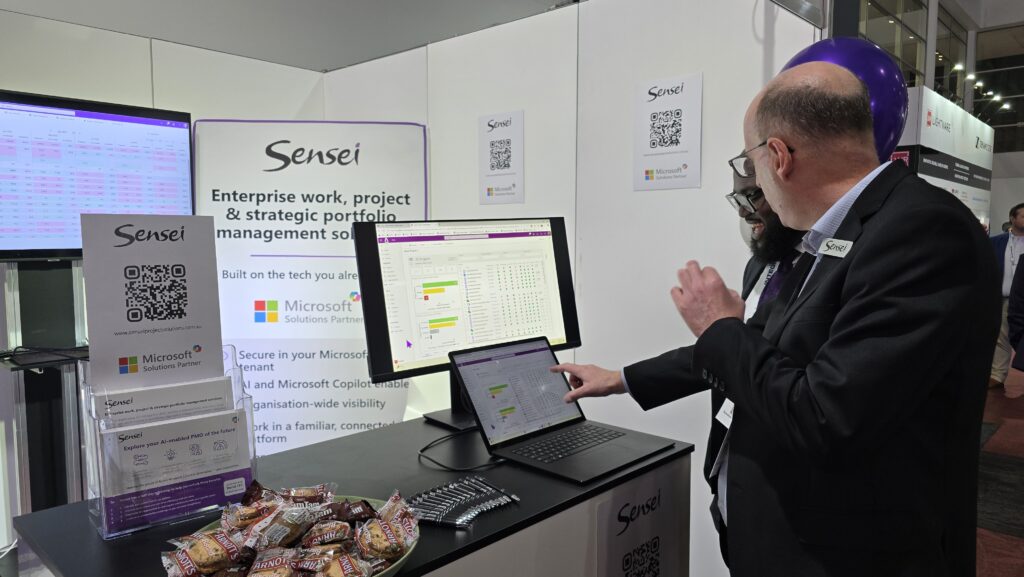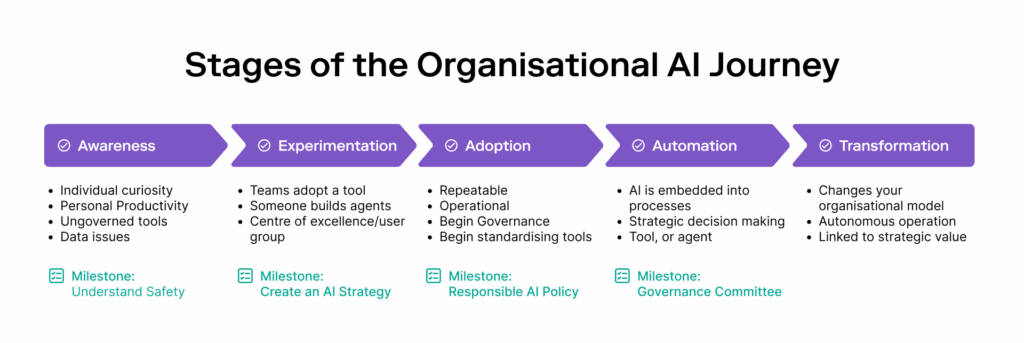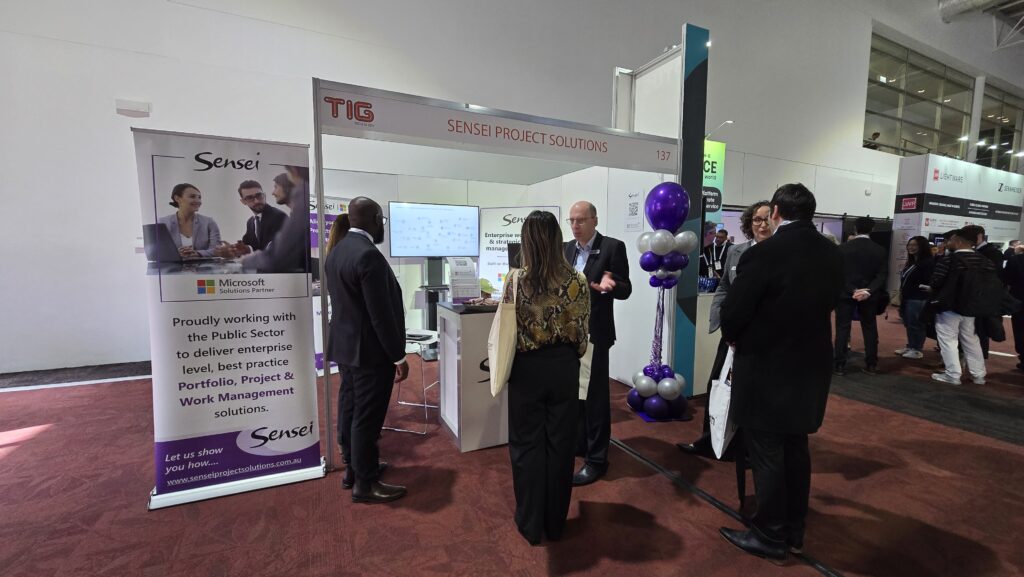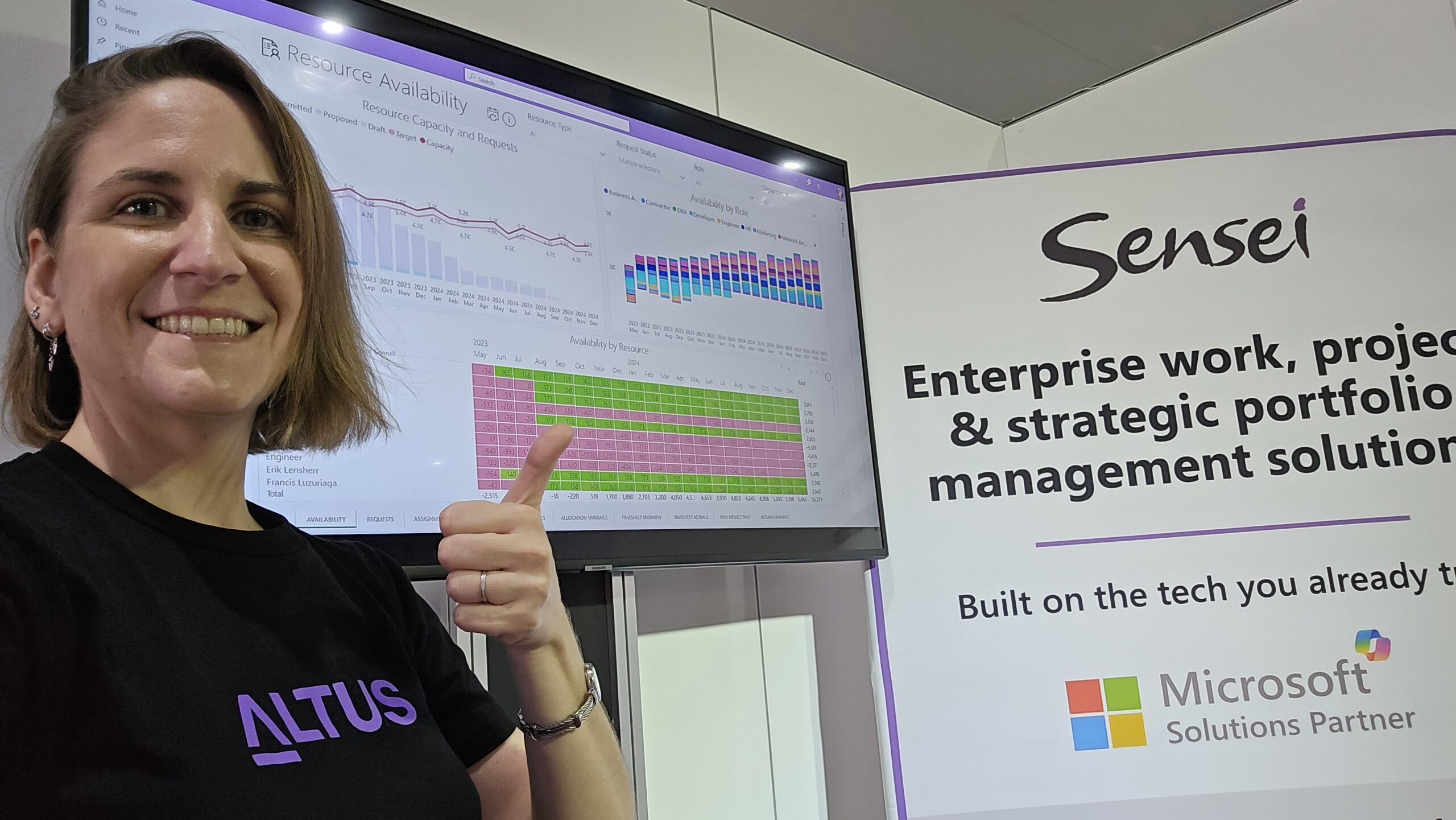After two days at Tech in Gov, one theme was impossible to miss: everyone is talking about AI.
But when the excitement faded, one question kept surfacing: where does it actually fit into the day-to-day of a PMO or project and portfolio management?
Turns out, this uncertainty isn’t just in government… it’s everywhere!

AI innovation silos and the risks of organisational resistance
Across industries, organisations are still exploring what AI can realistically do for their PMO functions. The promise is there from streamlined reporting to predictive insights and automated workflows, but the path to real-world application remains murky for many.
At the moment, teams are experimenting with AI in small ways, such as drafting emails, writing reports, summarising a long document, analysing a dataset here and there. The problem? It rarely goes further than the individual. There’s no consistent process, no team-wide adoption, and certainly no integration at the portfolio level.
To make things trickier, many organisations are blocking access to AI tools like ChatGPT, Claude, and Gemini due to data security concerns.
While these concerns are valid, they can inadvertently stifle innovation. When people aren’t given safe, sanctioned ways to experiment with AI, the reality is, they will often find workarounds, most likely using unsanctioned tools that may pose even greater risks.

How to foster AI innovation in the workplace
The key lies in creating safe spaces for innovation. That means enabling teams to explore AI within secure, governed environments.
Think back to the first time you switched from an old phone to a smartphone. At first, you weren’t sure what to do with it beyond making calls. But once you downloaded one or two apps, you quickly saw the potential. Suddenly, it wasn’t just a phone, it was a map, a camera, a way to stay connected, even a tool for work. The hardest part was simply getting started. Once you saw what it could do, you kept exploring.
AI is at that same stage for PMOs today: the hardest part is simply getting started. The power becomes clear once you try a few safe, simple use cases. Then the ideas start flowing.
Microsoft Copilot, for example, offers a way to do just that. Because it operates within your Microsoft 365 environment and connects to your data via the Microsoft Dataverse, it allows teams to experiment with AI while keeping sensitive information protected.
During the conference, our partner, Sensei, introduced a model to help organisations make sense of their AI journey. Ryan Darby & Paul Oppong explained it through a simple diagram (see below). Think of it like a maturity model, but for AI, showing the indicators of where you are today and the milestones to aim for next.

Impactful AI in PMOs and business management won’t come from pasting screenshots or CSVs into a chat window. It will come from Copilot embedded in PPM/SPM platforms, with real-time access to centralised business data.
At Altus, we believe that successful AI adoption isn’t just about technology, it’s about people. Organisations need to bring their teams along on the journey, offering clarity, support, and room to explore.
With Copilot built into Altus, we’re already seeing exciting new use cases for AI every day. The innovations and capabilities our teams demo each week are showing us the transformational potential of AI for our customers. And the best part? These will be launching in Altus very soon, helping accelerate the AI journey for the organisations we work with.

With Copilot in Altus, getting started won’t be the hardest part anymore. You can experiment in a safe environment, and from there, new ideas will naturally emerge about how AI can support your day-to-day work.
The future of AI in PMO won’t be defined by flashy tools, but by thoughtful, secure integration that empowers people to work smarter, every day.





